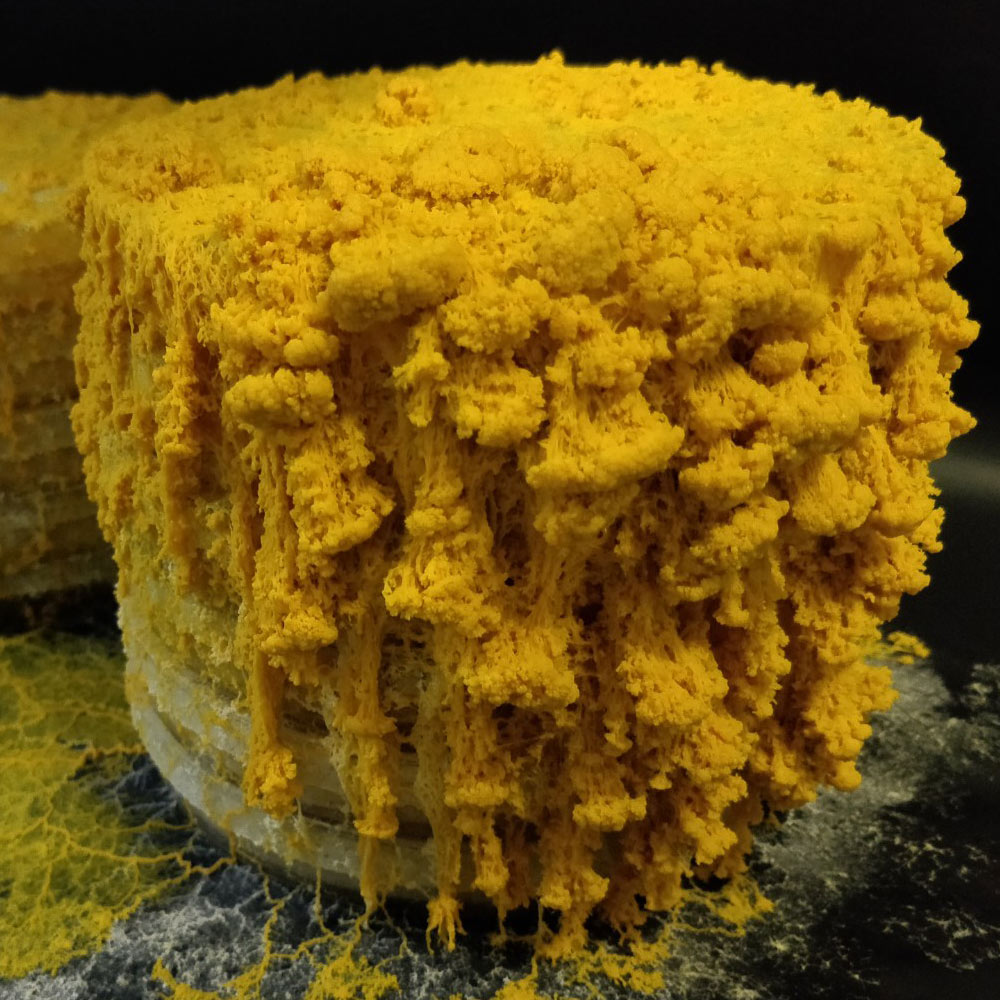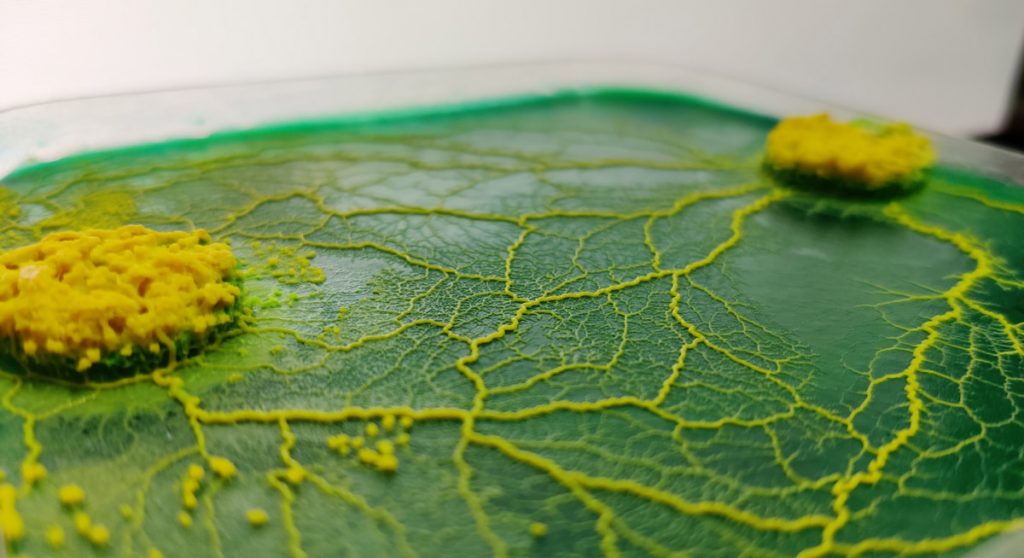Have you just discovered the Blob and are not sure which way to go?
What to do with your Blob?
How to wake him up? How to raise it?
How to experiment? How to manage departures on vacation?
What if we want to part with it?
What will you need?
In addition to our kits, to raise your slime mold over time, you will need:
- 15 minutes a day
- From the Agar and Quaker Oatmeal in good quantity
- Set of 5 150 mm petri dishes
- A butter knife (or our special Blob spatula)
How to raise your Blob?
Raising a blob is not complicated and does not take a lot of time. Allow about fifteen minutes a day to maintain it. When you need to stop breeding temporarily (going on vacation), all you have to do is put it in dormancy before your departure, and wake it up when you return. (explanations in the tutorial below). And when you want to part with it, you will just have to leave it in your garden or a flowerpot, or it will probably sporulate to reproduce. HappyEnd!
Here is in a few steps everything you need to know before, during and after ordering your Blob.
#1
Order
your blob
Choose your pet Blobs among our 2 strains (American & Australian).
They will reach you in good shape, dormant (sclerotia). and accompanied by the instructions for use. They will be waiting for you to wake up… Blobs can go dormant for years. So you will have plenty of time to deepen your knowledge and prepare yourself before waking them up… Your Blobs are ordered? See what follows.

#2
Make it bigger
acquaintance with the BLOB
/ The conference
Dr. Audrey Dussutour is the great Blob specialist.
In this video, she walks you through everything you need to know about the Blob before you wake it up.
#3
Consult
the tutorial
In this tutorial, Dr Audrey Dusstour gives you all the useful info, tools, methods and tips to easily raise your Blobs.
#4
Wake up
your Blob
Have you watched the previous videos? So you are ready to wake up your Blobs!
Look how easy it is!
Put them in their favorite environment and wake them up with a little water.
#5
Raise your blob
in petri dish
Raising a Blob is very easy.
All you need to do is respect these golden rules in your farms:
- It must be in a temperature of around 24 ° c
- It must evolve in a humid environment
- He fears the light
- He must be able to breathe
- He can feed on lots of things
- He loves oatmeal
- Mold is its main enemy
The easiest solution to respect these rules is breeding in a petri dish.
A good approach, therefore, is to learn to breed your Blob first in the ideal context of the petri dish, and then subject it to more creative situations second.
By following Dr Dussutour's tutorial, you will know how to grow your Blob in a petri dish context without difficulty.

#6
Experiment
Once you have mastered petri dish rearing, you will be able to experiment as you wish without risking “losing” or “killing” your Blob.
To do this, for each “at risk” experience (change of environment, new food, etc.), you will cut a piece of Blob that you will compare to your experiences, but while keeping your original Blob in “back up”. Petri dish. In doing so, you always have a perfectly healthy Blob in your petri dish as you subject some of its pieces to your experiments. From then on, you will no longer be afraid of making bad manipulations, you will always have Blob available in your petri dish.
Now be a creative scientist and offer your Blob all kinds of experiments. Why not start with the famous labyrinth test, reproduce the experience of the Alpha mission, or even nutrition tests. You can try to breed it in any environment you like. Some use vivariums, others glass jars, wooden boxes, plastic boxes…. Experiment with your Blob as much as you want, the only limit is your creativity, but never losing sight of the golden rule mentioned above:
- It must be in a temperature of around 24 ° c
- It must evolve in a humid environment
- He fears the light
- He must be able to breathe
- He can feed on lots of things
- He loves oatmeal
- Mold is its main enemy
And, if you have any questions, please contact us.
Good breeding!

LABYRINTH TEST:
As perfectly did bluedot-tech on their video, recreate the maze experience at home!
Using simple colored plastic papers that you cut out (book cover, insert, etc.) and some oats, create the labyrinths you like and offer your Blobs an orientation test!
“The blob being facetious, it will sometimes try to climb on the plastic, so do not hesitate to color your maze with an indelible marker, thus creating an impassable chemical barrier!”
Do you have any questions?
Consult our FAQ or contact us




